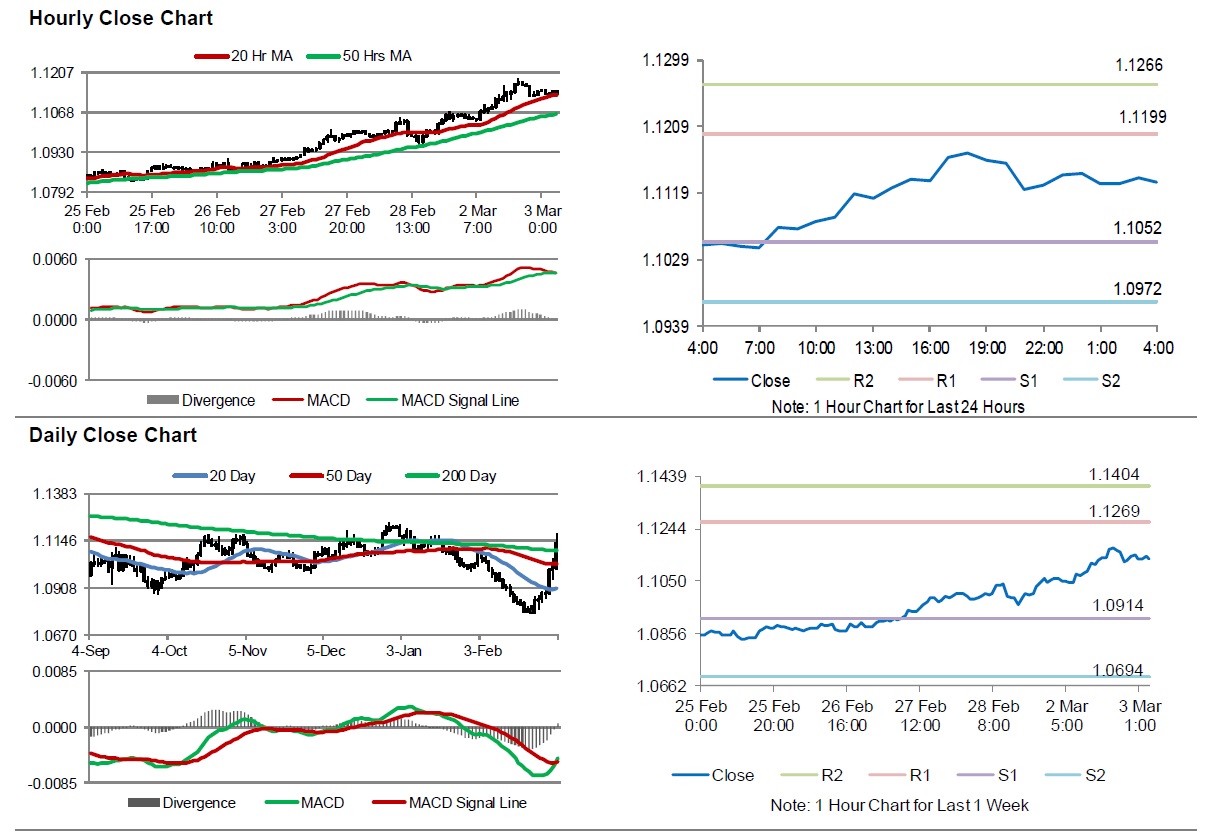For the 24 hours to 23:00 GMT, the EUR rose 0.77% against the USD and closed at 1.1143.
On the macro front, Euro-zone’s Markit manufacturing PMI rose to a level of 49.2 in February, marking its highest level in a year and compared to a level of 47.9 in the previous month. The preliminary figures had indicated a rise to a level of 49.1. Separately, in Germany, the Markit manufacturing PMI advanced more-than-expected to a level of 48.0 in February, hitting its highest level in 13-months and compared to a level of 45.3 in the previous month. The preliminary figures had indicated a rise to a level of 47.8.
In the US, the Markit manufacturing PMI dropped to a level of 50.7 in February, compared to a level of 50.8 in the previous month. Additionally, the ISM manufacturing PMI declined to 50.1 in February, surpassing market consensus for a drop to a level of 50.5 and compared to a level of 50.9 in the prior month. Meanwhile, construction spending advanced 1.8% on a monthly basis in February, driven by sharp increases in both private and public construction spending and compared to a revised rise of 0.2% in the previous month.
In the Asian session, at GMT0400, the pair is trading at 1.1133, with the EUR trading 0.09% lower against the USD from yesterday’s close.
The pair is expected to find support at 1.1052, and a fall through could take it to the next support level of 1.0972. The pair is expected to find its first resistance at 1.1199, and a rise through could take it to the next resistance level of 1.1266.
Moving ahead, investors would direct their attention to Euro-zone’s unemployment rate and the producer price index, both for January as well as the consumer price index for February, slated to release in a few hours. Later in the day, the IBD/TIPP economic optimism for February, will keep investors on their toes.
The currency pair is showing convergence with its 20 Hr moving average and trading above its 50 Hr moving average.

